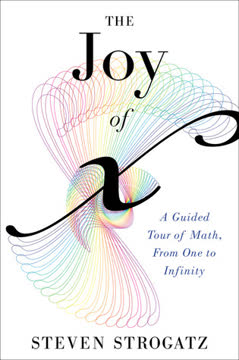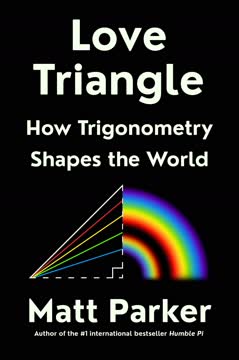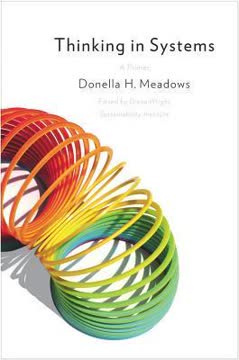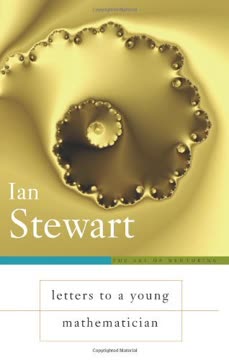نکات کلیدی
1. ریاضیات در حال انقلاب در زیستشناسی است و بینشهایی در مورد پیچیدگی زندگی ارائه میدهد
زیستشناسی مرز بزرگ ریاضی در قرن بیست و یکم خواهد بود.
ظهور زیستشناسی ریاضی. کاربرد ریاضیات در زیستشناسی درک ما از زندگی را دگرگون میکند. از فرآیندهای سلولی تا پویایی اکوسیستمها، مدلهای ریاضی بینشهای جدیدی در پدیدههای پیچیده زیستی ارائه میدهند. این رویکرد بینرشتهای تنها به کاربرد تکنیکهای ریاضی موجود در مسائل زیستی محدود نمیشود، بلکه به توسعه مفاهیم و روشهای ریاضی جدیدی که به چالشهای زیستشناسی اختصاص دارند، میپردازد.
کاربردهای متنوع پدیدار میشوند. زیستشناسی ریاضی در زمینههای مختلفی کاربرد یافته است:
- مدلسازی تاخوردگی پروتئین و تعاملات مولکولی
- تحلیل شبکههای تنظیمی ژنتیکی
- پیشبینی پویایی جمعیت و رفتار اکوسیستم
- درک تشکیل الگوها در زیستشناسی تکوینی
- شبیهسازی شبکههای عصبی و عملکرد مغز
با افزایش کمی شدن زیستشناسی، همافزایی بین ریاضیات و زیستشناسی انتظار میرود که به کشفیات انقلابی منجر شود و درک ما از زندگی را دگرگون کند.
2. DNA تمام داستان نیست: تاخوردگی پروتئین و اپیژنتیک نقشهای حیاتی ایفا میکنند
توالیهای ژنتیکی رمزگذاری شده در DNA بخش بزرگی از 'راز زندگی' هستند. اگر از نقش DNA آگاه نباشید، اگر ندانید توالی چگونه به نظر میرسد، بخش عظیمی از تصویر را از دست دادهاید.
فراتر از کد ژنتیکی. در حالی که DNA بدون شک برای زندگی حیاتی است، تمام داستان نیست. نحوه تاخوردگی پروتئینها به ساختارهای سهبعدی پیچیده و عوامل اپیژنتیکی که بر بیان ژن تأثیر میگذارند، به همان اندازه در تعیین ویژگیها و عملکردهای یک ارگانیسم مهم هستند.
پیچیدگی تاخوردگی پروتئین. تاخوردگی پروتئینها به فرمهای عملکردی خود یک فرآیند پیچیده است که نمیتوان آن را تنها از توالی DNA پیشبینی کرد. عواملی که بر تاخوردگی پروتئین تأثیر میگذارند شامل:
- توالی اسید آمینه
- شرایط محیطی (pH، دما و غیره)
- حضور پروتئینهای شاپرون
- تغییرات پس از ترجمه
تأثیرات اپیژنتیک. مکانیسمهای اپیژنتیک میتوانند بیان ژن را بدون تغییر در توالی DNA پایه تغییر دهند. اینها شامل:
- متیلاسیون DNA
- تغییرات هیستونی
- تعاملات RNA غیرکدکننده
درک این فرآیندها برای داشتن تصویری کامل از چگونگی ترجمه اطلاعات ژنتیکی به عملکرد زیستی و چگونگی تعامل ارگانیسمها با محیط خود ضروری است.
3. شکست تقارن الگوها در طبیعت و تنوع گونهها را توضیح میدهد
نارنجی بر آبی غلبه میکند، آبی بر زرد غلبه میکند، زرد بر نارنجی غلبه میکند. این هم از 'بقای اصلح'.
تقارن در زیستشناسی. شکست تقارن یک مفهوم بنیادی در زیستشناسی است که توضیح میدهد چگونه الگوها و ساختارهای پیچیده از سیستمهای اولیه یکنواخت پدیدار میشوند. این اصل به پدیدههای زیستی مختلفی از جمله تشکیل الگوهای پوشش حیوانات تا تنوع گونهها اعمال میشود.
کاربردهای شکست تقارن:
- تشکیل الگوها در توسعه جنینی
- تمایز سلولی
- تنوع گونهها از طریق تابش تطبیقی
- تقسیمبندی نیچهای اکولوژیکی
در زمینه زیستشناسی تکاملی، شکست تقارن به توضیح چگونگی همزیستی چندین گونه در یک محیط کمک میکند و تفسیرهای سادهانگارانه از "بقای اصلح" را به چالش میکشد. دینامیک سنگ-کاغذ-قیچی که در برخی گونهها مشاهده میشود، جایی که هیچ استراتژی واحدی به طور جهانی برتر نیست، نشان میدهد که چگونه شکست تقارن میتواند تنوع زیستی را حفظ کند و تکامل را به پیش ببرد.
4. نظریه آشوب پویایی جمعیت و تنوع اکوسیستم را روشن میکند
آشوب همچنین پارادوکس پلانکتون را حل میکند.
آشوب در بومشناسی. نظریه آشوب، که اغلب با "اثر پروانهای" مرتبط است، پیامدهای عمیقی برای درک پویایی جمعیت و تنوع اکوسیستم دارد. در سیستمهای بومشناسی، تغییرات کوچک در شرایط اولیه میتواند به نتایج به شدت متفاوتی منجر شود، که پیشبینیهای بلندمدت را چالشبرانگیز میکند اما الگوهای زیربنایی را آشکار میسازد.
کاربردهای نظریه آشوب در زیستشناسی:
- توضیح نوسانات در اندازههای جمعیت
- درک همزیستی چندین گونه در محیطهای محدود
- مدلسازی گسترش اپیدمیها
- تحلیل تغییرپذیری ریتم قلب
"پارادوکس پلانکتون"، جایی که بسیاری از گونهها در محیطهای ظاهراً همگن همزیستی میکنند، از طریق دینامیکهای آشوبی حل میشود. این نوسانات به گونهها اجازه میدهد تا منابع را در زمانهای مختلف بهرهبرداری کنند و تنوع زیستی را ترویج میدهند. این بینش نشان میدهد که چگونه رفتار پیچیده و ظاهراً غیرقابل پیشبینی میتواند از قوانین ساده بومشناسی پدیدار شود و دیدگاههای سنتی از پایداری و تعادل اکوسیستم را به چالش بکشد.
5. شبکهها برای درک سیستمهای زیستی اساسی هستند
شبکهها در زیستشناسی فراوانند.
شبکههای زیستی. نظریه شبکه چارچوب قدرتمندی برای درک سیستمهای زیستی پیچیده در مقیاسهای مختلف ارائه میدهد. از تعاملات مولکولی درون سلولها تا شبکههای غذایی در اکوسیستمها، تحلیل شبکه الگوها و اصول پنهانی را که سازمان زیستی را حاکم میکنند، آشکار میسازد.
انواع شبکههای زیستی:
- شبکههای تنظیمی ژنتیکی
- شبکههای تعامل پروتئین-پروتئین
- شبکههای متابولیک
- شبکههای عصبی
- شبکههای غذایی اکولوژیکی
تحلیل شبکه در زیستشناسی به بینشهای مهمی منجر شده است، مانند:
- شناسایی "ژنهای هاب" کلیدی در فرآیندهای سلولی
- درک استحکام و آسیبپذیری اکوسیستمها
- مدلسازی گسترش بیماریها در جمعیتها
- روشنسازی عملکرد مغز و پردازش اطلاعات
با اعمال نظریه شبکه به سیستمهای زیستی، محققان میتوانند ویژگیهای نوظهور را کشف کنند و رفتارهای سیستمگستردهای را پیشبینی کنند که از مطالعه اجزای فردی به تنهایی آشکار نمیشود.
6. زندگی مصنوعی و زیستشناسی مصنوعی مرزهای بین زنده و غیرزنده را محو میکنند
اگر زندگی مصنوعی قوی درست باشد، آنچه مهم است این نیست که زندگی از چه ساخته شده است، بلکه آنچه انجام میدهد.
تعریف مجدد زندگی. زندگی مصنوعی (alife) و زیستشناسی مصنوعی تعاریف سنتی ما از زندگی را به چالش میکشند با ایجاد سیستمهایی که ویژگیهای شبیه به زندگی را بدون اینکه "ارگانیسمهای طبیعی" باشند، نشان میدهند. این حوزهها اصول بنیادی زندگی را با تلاش برای بازآفرینی سیستمهای زنده از اجزای غیرزنده بررسی میکنند.
پیشرفتهای کلیدی:
- برنامههای کامپیوتری خودتکثیر
- اتوماتای سلولی که رفتارهای پیچیدهای نشان میدهند
- ژنومهای مصنوعی که در سلولهای موجود وارد میشوند
- سلولهای مصنوعی با ژنومهای حداقلی
این پیشرفتها سوالات فلسفی و عملی در مورد ماهیت زندگی را مطرح میکنند. اگر بتوانیم سیستمهایی ایجاد کنیم که ویژگیهای کلیدی ارگانیسمهای زنده (مانند تولید مثل، متابولیسم و تکامل) را از اجزای غیرزیستی نشان دهند، این نشان میدهد که زندگی ممکن است بیشتر درباره سازمان و پردازش اطلاعات باشد تا زیرلایههای شیمیایی خاص.
7. جستجو برای زندگی فرازمینی تعریف ما از زندگی را به چالش میکشد
آیا میتوانیم چیزی واقعاً علمی درباره زندگی در سیارات دیگر بگوییم؟
گسترش مفهوم ما از زندگی. جستجو برای زندگی فرازمینی ما را مجبور میکند تا تعریف زمینمحور خود از زندگی را بازنگری کنیم. همانطور که محیطهایی را که به طور رادیکال با زمین متفاوت هستند کاوش میکنیم، باید به امکان وجود اشکال زندگی که ممکن است با زیستشناسی آشنا و مبتنی بر کربن و وابسته به آب ما مطابقت نداشته باشند، باز باشیم.
ملاحظات برای زندگی فرازمینی:
- بیوشیمیهای جایگزین (مثلاً زندگی مبتنی بر سیلیکون)
- حلالهای عجیب و غریب جایگزین آب (مثلاً متان مایع)
- زندگی در محیطهای شدید (مثلاً درون ستارگان یا روی سیارات سرگردان)
- اشکال زندگی غیرسلولی
جستجو برای زندگی فرازمینی نه تنها نوآوریهای تکنولوژیکی در نجوم و اکتشافات فضایی را به پیش میبرد، بلکه درک ما از اصول بنیادی زندگی را نیز عمیقتر میکند. با به چالش کشیدن فرضیات ما درباره آنچه زندگی را تشکیل میدهد، این جستجو ممکن است به پیشرفتهایی در زیستشناسی، شیمی و فیزیک منجر شود و به طور بالقوه درک ما از جایگاه خود در جهان را دگرگون کند.
آخرین بهروزرسانی::
FAQ
What's Mathematics of Life about?
- Interdisciplinary Exploration: Mathematics of Life by Ian Stewart explores the intersection of mathematics and biology, demonstrating how mathematical concepts are crucial for understanding biological phenomena.
- Historical and Future Revolutions: The book outlines five historical revolutions in biology and proposes a sixth revolution driven by mathematics, emphasizing its growing importance in biological research.
- Diverse Applications: Stewart covers a range of topics, from population dynamics and neural networks to the philosophical questions about life and the potential for extraterrestrial life.
Why should I read Mathematics of Life?
- Unique Perspective: The book offers a unique perspective on the application of mathematical principles to biological phenomena, appealing to those interested in both fields.
- Accessible Writing: Ian Stewart's engaging writing style makes complex topics accessible, even for readers without a strong background in mathematics or biology.
- Current Relevance: With ongoing advancements in biological sciences, understanding the mathematical frameworks that underpin these developments is increasingly important.
What are the key takeaways of Mathematics of Life?
- Mathematics as a Central Tool: Mathematics is not just a support for biology but a central tool that provides insights into biological processes and phenomena.
- Patterns and Complexity: The book highlights the prevalence of patterns in nature and the complexity of life, from molecular structures to ecosystems, and how mathematics helps model these complexities.
- Evolutionary Insights: Stewart discusses how mathematical models can explain evolutionary dynamics, such as natural selection and species diversity.
What are the best quotes from Mathematics of Life and what do they mean?
- "Biology will be the great mathematical frontier of the twenty-first century.": This quote underscores the growing importance of mathematics in biological research, suggesting future discoveries will rely on mathematical insights.
- "Mathematics is the language of nature.": This emphasizes the fundamental role of mathematics in understanding the natural world, suggesting that mathematical principles underpin biological processes.
- "Simple causes can have complex effects.": This reflects the idea that simple mathematical models can lead to unpredictable and intricate behaviors in biological systems.
What are the five revolutions in biology discussed in Mathematics of Life?
- Microscope Invention: Allowed scientists to observe cellular complexity, revealing that organisms are made of cells.
- Classification of Species: Carl Linnaeus's systematic classification laid the groundwork for modern taxonomy and biological diversity organization.
- Theory of Evolution: Darwin's Origin of Species introduced natural selection, fundamentally changing our understanding of species diversity.
- Discovery of Genes: Gregor Mendel's work on inheritance established the foundation for genetics and trait transmission.
- Structure of DNA: Watson and Crick's discovery of DNA's double helix provided insight into heredity and life's mechanisms.
How does Ian Stewart define life in Mathematics of Life?
- Organized Structure: Life possesses an organized structure essential for maintaining internal processes and responding to environmental changes.
- Regulation and Adaptation: Life forms regulate their internal behavior in response to stimuli and adapt to long-term environmental changes.
- Reproduction and Growth: The ability to reproduce and grow is central, with reproduction involving variability that allows for evolution.
How does Mathematics of Life explain the role of mathematics in understanding evolution?
- Mathematical Models: Models simulate evolutionary processes, helping scientists understand species adaptation and change over time.
- Game Theory Applications: Game theory analyzes survival and reproduction strategies, predicting behaviors in populations.
- Statistical Analysis: Statistics help analyze biological data, identifying patterns and making inferences about evolutionary relationships.
What is the paradox of the plankton discussed in Mathematics of Life?
- Competitive Exclusion Principle: Gause's principle states that two species competing for the same niche cannot coexist indefinitely, yet plankton species exhibit high diversity.
- Chaotic Dynamics: Chaotic dynamics in ecosystems allow for species coexistence by enabling population size fluctuations.
- Implications for Biodiversity: The paradox challenges traditional ecological theories, suggesting ecosystems can support more diversity than previously thought.
What mathematical models are used to explain population dynamics in Mathematics of Life?
- Logistic Growth Model: Describes how populations grow rapidly at first and then level off as they approach carrying capacity.
- Leslie Matrix: Accounts for age structure and mortality rates, allowing detailed analysis of population changes over time.
- Chaos Theory: Explores how simple models can lead to unpredictable and complex behaviors, highlighting nonlinear interactions in ecological systems.
How does Mathematics of Life illustrate the relationship between mathematics and ecology?
- Modeling Ecosystems: Mathematical models simulate ecological interactions, helping understand population dynamics and ecosystem stability.
- Network Theory: Relationships among species are represented mathematically to analyze ecosystem structure and function.
- Predictive Power: Models provide predictive insights, allowing anticipation of ecosystem changes due to environmental pressures or human activities.
What role does lateral inhibition play in development, according to Mathematics of Life?
- Cell Differentiation: Lateral inhibition allows cells to differentiate by inhibiting neighboring cells from adopting the same fate.
- Mathematical Modeling: Models simulate lateral inhibition effects, showing how small differences can produce complex patterns.
- Emergent Patterns: Random fluctuations can lead to distinct cell types, demonstrating the power of mathematical modeling in understanding biological processes.
What is the significance of the Fibonacci sequence in Mathematics of Life?
- Natural Patterns: Appears in various natural patterns, such as leaf arrangement and tree branching, reflecting underlying mathematical principles.
- Mathematical Relationships: Connected to the golden ratio, illustrating harmony between mathematics and the natural world.
- Modeling Growth: Used to model growth processes in plants, demonstrating how mathematical concepts provide insights into biological phenomena.
نقد و بررسی
کتاب ریاضیات زندگی نقدهای متفاوتی دریافت کرده است و بهطور میانگین امتیاز 3.62 را کسب کرده است. خوانندگان از نوشتار شفاف استوارت و دیدگاههای جذاب او دربارهی کاربردهای ریاضی در زیستشناسی قدردانی میکنند. بسیاری این کتاب را آموزشی میدانند و موضوعاتی مانند دنبالههای فیبوناچی، ساختار DNA و الگوهای تکاملی را پوشش میدهد. با این حال، برخی به عمق نابرابر محتوا انتقاد دارند، بهطوریکه فصلهای ابتدایی بیش از حد ساده و فصلهای بعدی بیش از حد پیچیده به نظر میرسند. تعدادی از منتقدان به اشتباهات واقعی و توضیحات ناقص اشاره میکنند. بهطور کلی، کتاب بهخاطر رویکرد بینرشتهایاش تحسین میشود اما ممکن است برای خوانندگانی که زمینهی علمی قوی ندارند، چالشبرانگیز باشد.
Similar Books
















